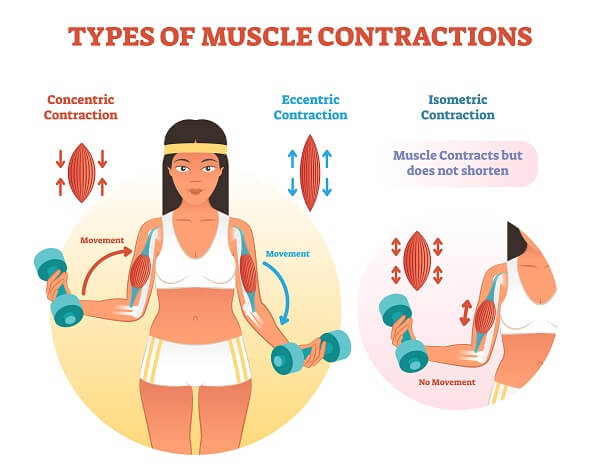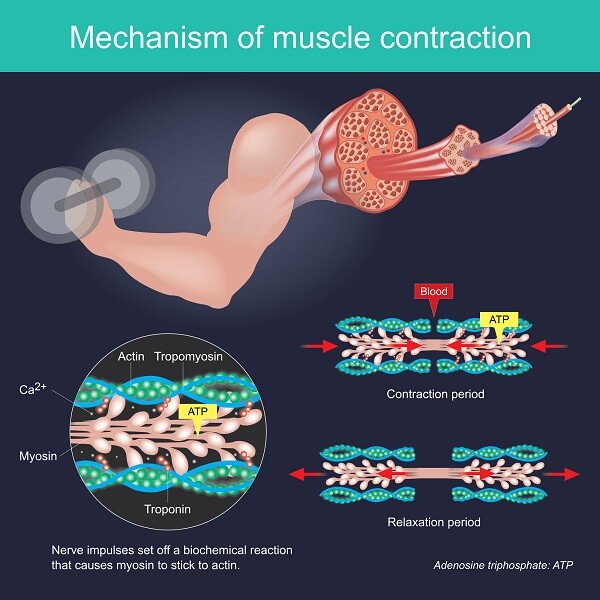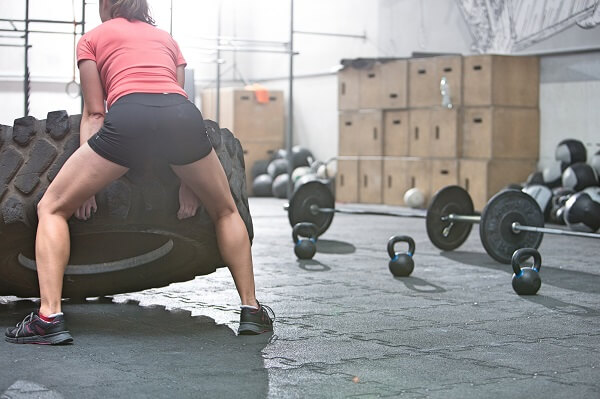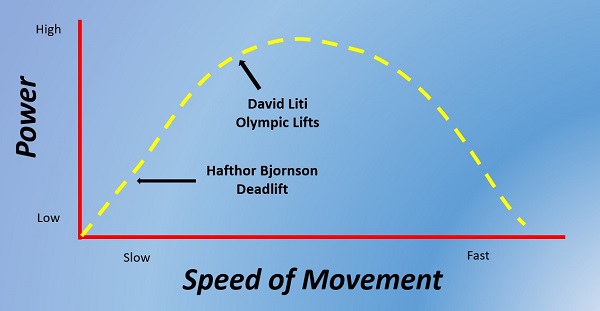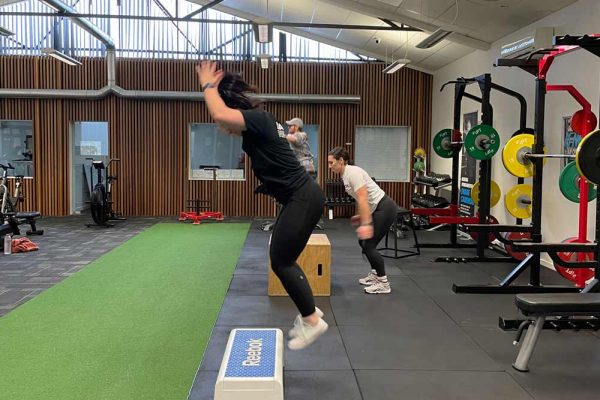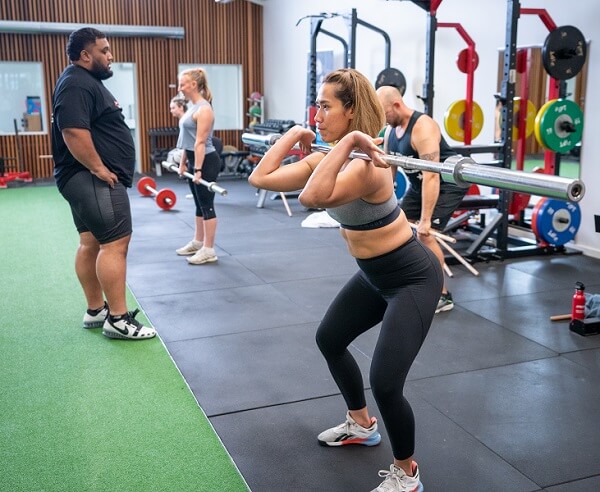Strength vs. Power – It’s all About Speed!

By Dan Speirs
At NZIHF, we get to work with and learn from some of New Zealand’s finest athletes.
While filming content for our Personal Training programme we were fortunate to spend a day with Shane Cameron. For those who don’t know, Shane is a Commonwealth Games medalist and former world heavyweight boxing contender.
In association with his company Counterpunch, Shane delivers ‘Boxing Fundamentals’, an elective course in our Personal Training programme.
Prior to filming, one of our staff members boasted ‘I reckon I could take a punch from Cameron’. This confidence evaporated shortly after filming commenced.
And he remained remarkably quiet for the rest of the day…
You see, as Shane demonstrated his punches they were ‘intimidatingly’ powerful. His hooks were fast, and the thud on the focus pads suggested there was a lot of force behind them.
Ultimately, this is what power is – the optimal combination of speed and force.
In our core Personal Training course we examine the various components of fitness which include strength and power. Of all the components, these two tend to cause the most confusion – what differentiates them?
This confusion isn’t helped by certain sports. For example, we might look at ‘Powerlifting’ and genuinely ask – ‘where’s the power, I don’t see it’?
So, to help understand the difference between strength and power, in this article we’ll examine:
- The relationship between force and speed
- How force and speed relate to power
- Strength and power as they relate to Olympic Weightlifting vs. Powerlifting
- Building power with Plyometrics
How do force and speed relate?
First of all, we need to understand how force is generated.
Force is generated by the contraction of muscles. Contraction implies that a muscle is getting shorter. When it comes to our skeletal muscles, this isn’t always the case.
Contractions can involve a muscle shortening (concentric contraction), lengthening (eccentric contraction) or staying the same length (isometric contraction).
In an exercise setting we can think of these contractions as generating:
- force, but not enough to move an object (isometric) – for example pushing a wall
- enough force to move an object, by overcoming its weight and the downward force of gravity (concentric) – for example curling a bar up during a bicep curl
- force to resist, but not overcome an objects weight and the downward force of gravity (eccentric) – for example when lowering a bar during a bicep curl.
The importance of these distinctions will become clearer as we move on.
Muscular contraction occurs deep within our skeletal muscles. In response to signals from the nervous system, the contractile proteins actin and myosin bind and pull on each other. It’s the action of actin and myosin that generates force.
For muscular contractions to happen:
- The nervous system needs to determine what degree of force is required and inform the respective muscles
- Sufficient energy, in the form of adenosine triphosphate (ATP) must be present in the muscle to fuel the contraction
- Sufficient calcium (Ca2+) must be present to allow the actin and myosin to bind.
These are a few of the key ‘moving parts’ involved in muscle contraction. The important thing to understand here is that:
Generating lots of force requires an element of time.
We see this on the following diagram:
At faster contraction speeds (point 1 on the diagram above), less force is able to be produced. This is because there is less time for a quantity of actin and myosin to bind.
As contraction speeds get slower (point 2 above), more force is able to be produced. This is because there is more time for a greater quantity of actin and myosin to bind.
And at very slow or no contraction speed (point 3), even more force can be produced. This is because the only time limiting factor is the eventual onset of muscular fatigue.
Think about this in relation to lifting a weight at the gym. If the weight is light, you’ll be able to move it reasonably quickly as not much force needs to be produced. As the weight gets heavier, your ability to lift it quickly diminishes. To lift the heavier weight, you’ll need to produce more force which takes time.
And, if you tried to shift an immovable object (the wall), you might hit your maximal force generating capacity without any movement occurring. You push like mad, but nothing happens. After a few seconds though your force production starts to diminish as fatigue creeps in.
So, in terms of strength – we’re looking at the ability to produce as much force as possible. Hence, activities requiring maximal, or near maximal strength, tend to be relatively slow.
*NB. The capacity to generate force is also dependent on muscle fibre type. We all a have a variety of fast and slow-twitch fibres. While fibre types and their properties are worthy of a separate article, the important thing to know is:
- Fast twitch fibres are capable of producing more force than slow twitch fibres at any contraction speed.
How do force and speed relate to power?
As opposed to producing as much force as possible, power is concerned with:
- Producing the maximum amount of force over a short period of time.
Power is all about producing explosive movements that have the optimal combination of force and speed. We see this as the ‘power curve’ on the following diagram:
With power, we observe that:
- Slow movements might enable a lot of force to be generated, but because there is an absence of speed, they lack power
- Very fast movements lack power because the contractile proteins don’t have sufficient time to bind and therefore, generate force.
Optimal power is produced when contractions allow a sufficient quantity of force to be produced, whilst not compromising speed.
Ultimately, power involves a trade-off between maximising the speed of movement with maximising force production.
Thinking back to Shane Cameron, his punches might look like this on the power curve:
His jab is lightning fast and covers a relatively short range. Hence, there’s little time for a quantity of actin and myosin to bind and produce force. Shane’s jab isn’t his most powerful punch.
In contrast, his hook covers a greater range which allows time for more actin and myosin to bind and produce force. Consequently, his hook is more powerful than his jab.
This is all relative of course. A ‘low’ power jab for a highly trained boxer like Shane Cameron would exceed the most powerful punch that most of us armchair warriors could create!
*NB. Again, it’s worth mentioning that muscle fibres have different properties. Specially:
- Fast twitch fibres are also capable of producing more power than slow twitch fibres at any contraction speed.
Where’s the power in Powerlifting?
With regard to the competitive lifting sports, we’re also very fortunate to have:
- Commonwealth Games gold medalist David Liti and coach Tina Ball delivering our Olympic Lifting course
- Ex-competitive Powerlifter Tom Hart delivering our Strength Training course.
Both courses are electives in our Personal Training programme.
These specialisations help us understand the difference between strength and power. However, their naming can be somewhat misleading!
‘Powerlifting’ consists of three lifts: the Deadlift, Squat, and Bench Press. The objective is to lift the maximum weight possible in each lift.
Check out this short clip of Icelandic strongman Hafthor Bjornson breaking a deadlift record. See if you notice the power-related issue?
Bjornson generated a phenomenal amount of force! That was a solid steel bar bending like a rubber band after all.
But the lift itself was reasonably slow. Maximum force generation requires time for the maximum amount of actin and myosin to bind after all. Bjornson demonstrated a massive amount of strength but due to the absence of speed there wasn’t much power in his lift.
Just like Powerlifting, the objective of Olympic Lifting is also to lift as much weight as possible. Olympic Lifting consists of two lifts: the Snatch, and the Clean and Jerk.
Contrast Bjornson’s deadlift with David Liti’s 2022 Commonwealth Games lifts:
You’ll notice that Liti’s lifts were considerably more powerful. Liti needed to generate speed as well as force to move the weight over a much larger range than Bjornson’s deadlift.
Here’s how the respective lifts might look on the power curve:
So, in terms of a ‘technically correct’ naming:
- Powerlifting really should be re-named as maximal strength lifting
- Olympic Weightlifting could be renamed as Powerlifting!
What is Plyometric Training?
Plyometrics or ‘Plyo’ is a very specific type of power-oriented training. Plyometrics is sometimes referred to as ‘reactive’ training because it:
- uses eccentric contractions to generate force for the concentric contractions that follow.
Think about what you’d do if I told you to jump as high as you can. Your first movement wouldn’t be the upwards jump. Without thinking about it, your first movement would be a partial squat.
The partial squat involves an initial eccentric contraction of the powerful quadricep (thigh) and gluteal (butt) muscles. This is followed immediately by concentric contractions of those same muscles.
The eccentric contraction primes the muscles to react.
An analogy is a rubber band – by stretching a rubber band you prime it to respond with a rapid shortening as you release it. Skeletal muscles behave in a similar way; an initial stretching movement helps to generate force for an explosive, reactive shortening.
Plyometric training also utilises the stretch reflex to help generate force. In our stretching article we discussed this reflex and the key sensory receptors, ‘muscle spindles’.
Muscle spindles sense when a muscle is being stretched and inform the spinal cord. In response, messages are sent from the spinal cord telling the stretched muscle to contract and resist the stretch.
The more rapid the stretch, the stronger the compensatory muscle contraction.
Plyometric training induces rapid ‘partial’ stretching of muscles in order to generate explosive reactive contractions. It does this through exercises such as depth jumps off boxes to improve reactive leaping.
As you might have figured, plyometric training is very specific and potentially dangerous.
Hence, it’s important to learn how to use plyometrics correctly. The good news is, we have an elective Power and Plyometrics course for Personal Training students wishing to specialise in this ‘explosive’ area!
A final word…
At the end of the day, strength and power are similar, with one key difference:
- Strength is oriented on producing the maximum amount of force
- Power is oriented on producing the maximum amount of force…in a short period of time.
This key difference manifests in:
- Strength-oriented activities appearing relatively slow as very heavy loads are moved
- Power-oriented activities always having an explosive element.
Regardless of their differences, strength and power-oriented exercises are inherently ‘high-intensity’ – they’re oriented on maximising force generation.
High-intensity exercise is great for producing reasonably quick, impressive training adaptations. But this comes with a trade-off, the higher the intensity, the greater the risk for injury.
As such, any strength and or power-related exercise needs to be learnt, under expert guidance.
If you’d like to gain the benefits of strength and/or power-oriented exercise, under the guidance of some of New Zealand’s best, then check out our suite of Pro-Series Fitness Courses.
Use Your Passion for Fitness to Change Lives
Improve your own training, become a Qualified Personal Trainer and make a real difference in people's lives. Enquire now to find out more.



